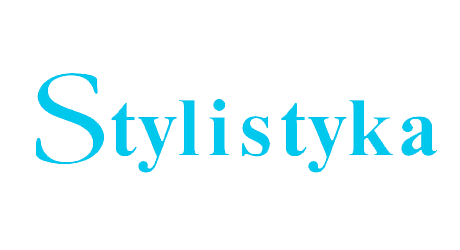Bartmiński J., Niebrzegowska-Bartmińska S., 2009, Tekstologia, Warszawa: Wydawnictwo Naukowe PWN.
Google Scholar
Czachorowski S., Abstrakt popularnonaukowy w publikacji naukowej – kiedy stanie się standardem?, https://www.edunews.pl/badania-i-debaty/opinie/6332-abstraktpopularnonaukowy-w-publikacji-naukowej-kiedy-stanie-sie-standardem (dostęp: 15.08.2023).
Google Scholar
Donesch-Jeżo E., 2013, Akademicki dyskurs medyczny w językach angielskim i polskim w ujęciu lingwistycznym i metodycznym: artykuł naukowy i jego abstrakt, Kraków: Fundacja Zdrowia Publicznego, Uniwersyteckie Wydawnictwo Medyczne „Vesalius”.
Google Scholar
Gajda S., 1982, Podstawy badań stylistycznych nad językiem naukowym, Wrocław: Państwowe Wydawnictwo Naukowe.
Google Scholar
Gajda S., 1990, Współczesna polszczyzna naukowa. Język czy żargon?, Opole: Instytut Śląski w Opolu.
Google Scholar
Gajda S., 2001, Styl naukowy. – Encyklopedia kultury polskiej XX wieku. Współczesny język polski, red. J. Bartmiński, Lublin: Wydawnictwo Uniwersytetu Marii Curie-Skłodowskiej, s. 255–268.
Google Scholar
Lee J., Yoo J., 2023, The Current State of Graphical Abstracts and How to Create Good Graphical Abstracts, „Science Editing”, https://www.escienceediting.org/journal/view.php?doi=10.6087/kcse.293 (dostęp: 18.08.2023).
Google Scholar
Leszkowicz M., 2020, Czytanie informacyjne, Poznań: Wydawnictwo Naukowe Uniwersytetu im. Adama Mickiewicza.
Google Scholar
Loewe I., 2007, Gatunki paratekstowe w komunikacji medialnej, Katowice: Wydawnictwo Uniwersytetu Śląskiego.
Google Scholar
Łaszkiewicz M., 2017, Streszczenie, abstrakt, adnotacja i ich funkcja w tekście naukowym. – Socjolekt. Idiolekt. Idiostyl. Historia i współczesność, red. U. Sokólska, Białystok: Wydawnictwo „Prymat”, s. 149–166.
Google Scholar
Niebrzegowska-Bartmińska S., 2012, Miejsce wartości w opisie gatunków mowy, „Język a Kultura”, t. 23, s. 33–41.
Google Scholar
Pamplona F., 2022, What is visual abstract and how to make one, https://mindthegraph. com/blog/visual-abstract/ (dostęp: 22.08.2023).
Google Scholar
Pulikowski A., 2011, Abstrakt ustrukturyzowany jako sposób na uporządkowanie informacji o treści publikacji i rozszerzenie możliwości wyszukiwawczych, http://eprints.rclis.org/18628/1/pol.pdf (dostęp: 15.08.2022).
Google Scholar
Pulikowski A., 2020, The Relation between the Structure of Abstracts in LIS and Anthropology Journals and Their Rank, „Zagadnienia Informacji Naukowej – Studia Informacyjne”, t. 58, nr 1, s. 24–39.
DOI: https://doi.org/10.36702/zin.645
Google Scholar
Stöckl H., 2011, Sprache-Bild-Texte lesen. Bausteine zur Methodik einer Grundkompetenz. – Bildlinguistik: Theorien – Methoden – Fallbeispiele, Hrsg. H.J. Diekmannshenke, Berlin: Erich Scmidt Verlag, s. 43–70.
Google Scholar
Ufnalska S., 2023, Wskazówki dla autorów i tłumaczy abstraktów artykułów naukowych, https://pl.linkedin.com/pulse/wskaz%C3%B3wki-dla-autor%C3%B3w-i-t%C5%82umaczy-abstrakt%C3%B3w-artyku%C5%82%C3%B3w-sylwia-ufnalska (dostęp: 24.08.2023).
Google Scholar
West C.C., Lindsay K.J., Hart A., 2020, Promoting Your Research Using Infographics and Visual Abstracts, „Journal of Plastic, Reconstructive & Aesthetic Surgery”, vol. 73, No. 12, s. 2103–2105.
DOI: https://doi.org/10.1016/j.bjps.2020.08.054
Google Scholar


 https://doi.org/10.25167/Stylistyka34.2024.7
https://doi.org/10.25167/Stylistyka34.2024.7
